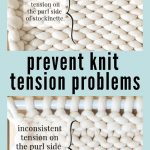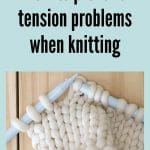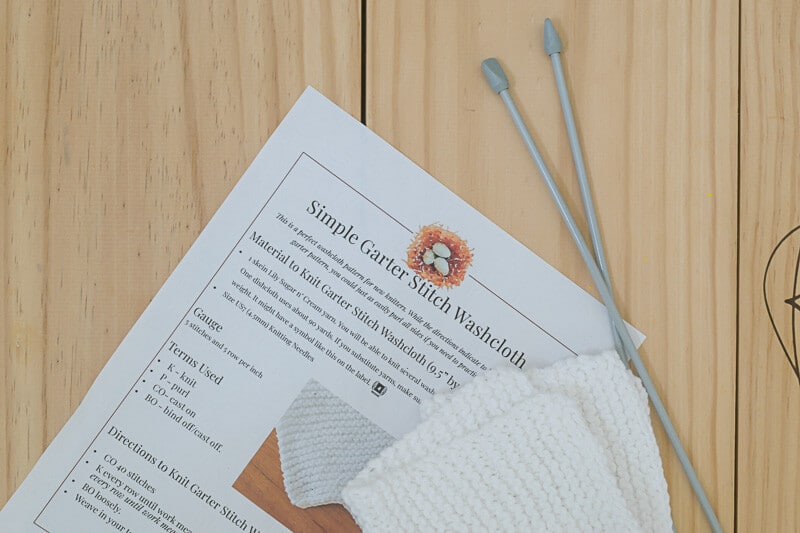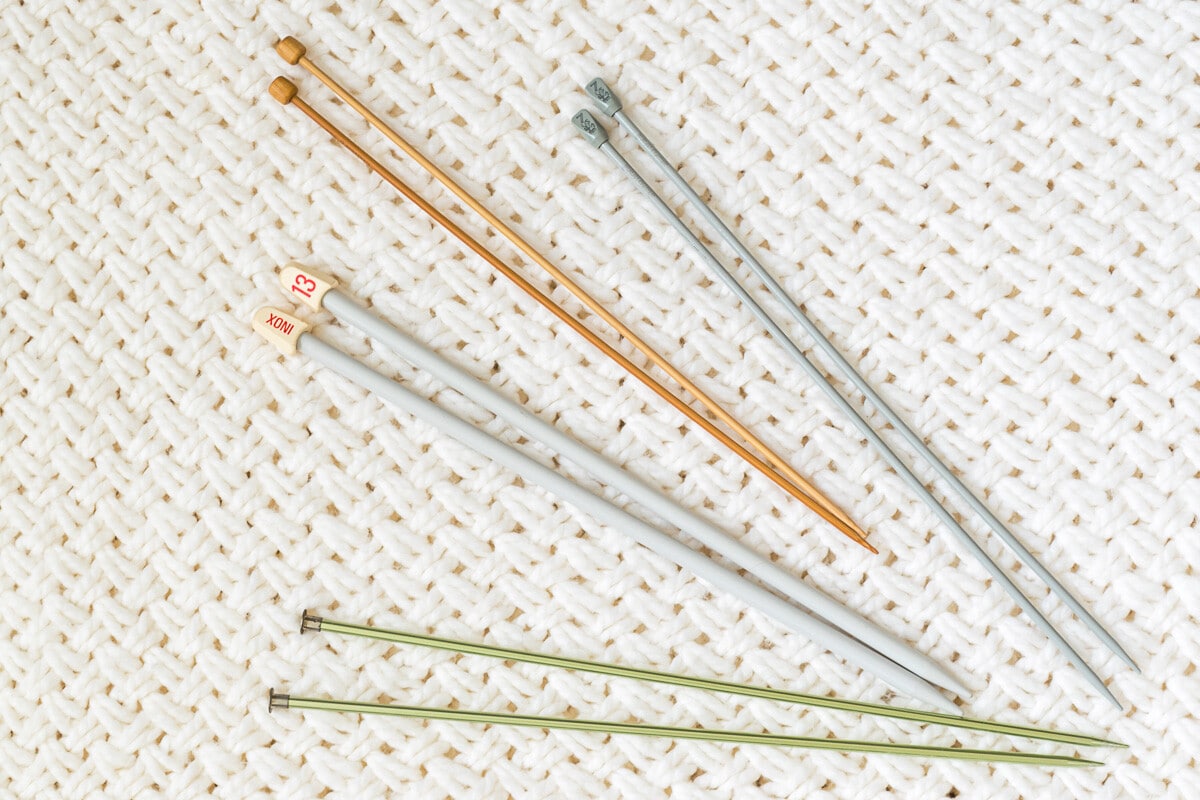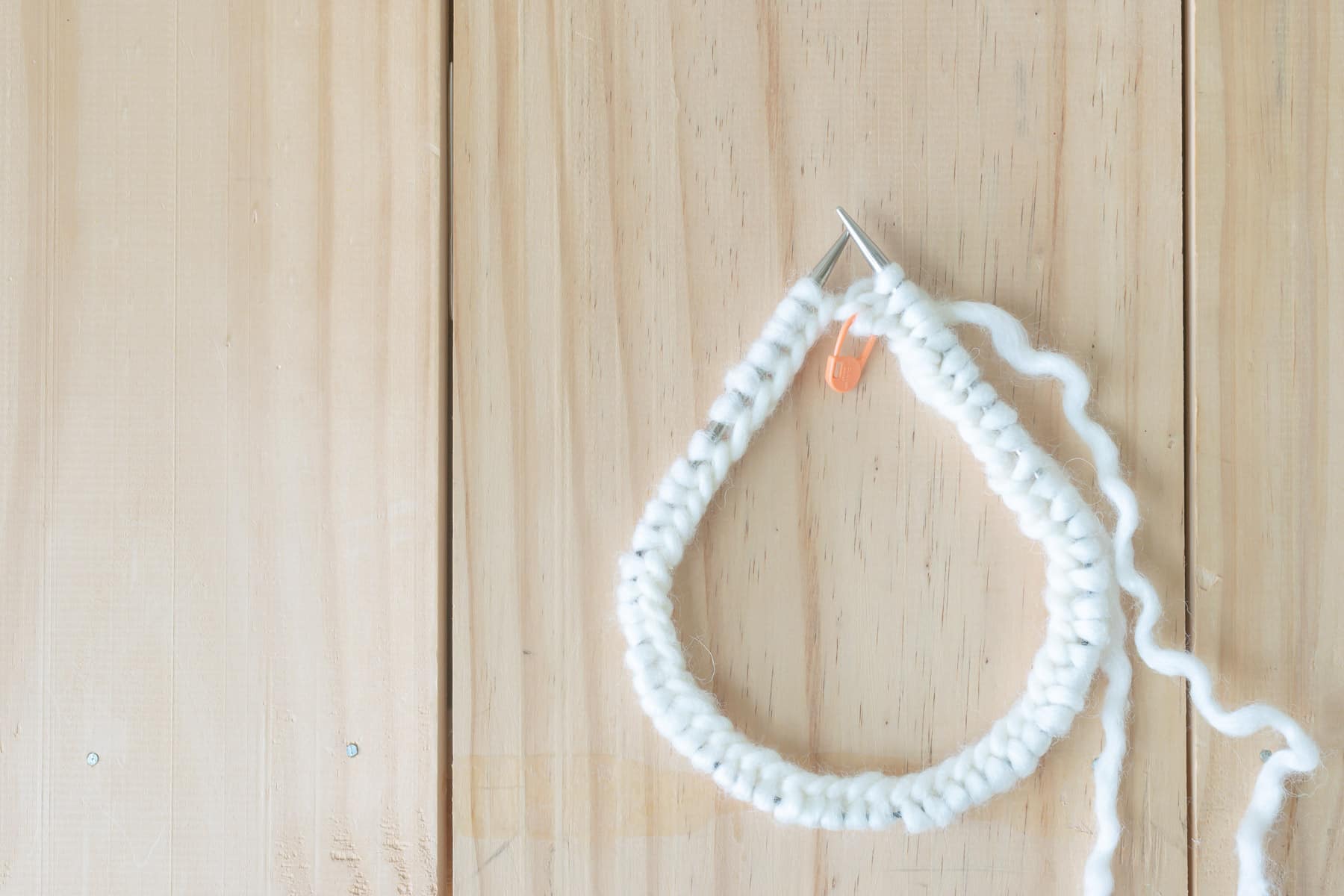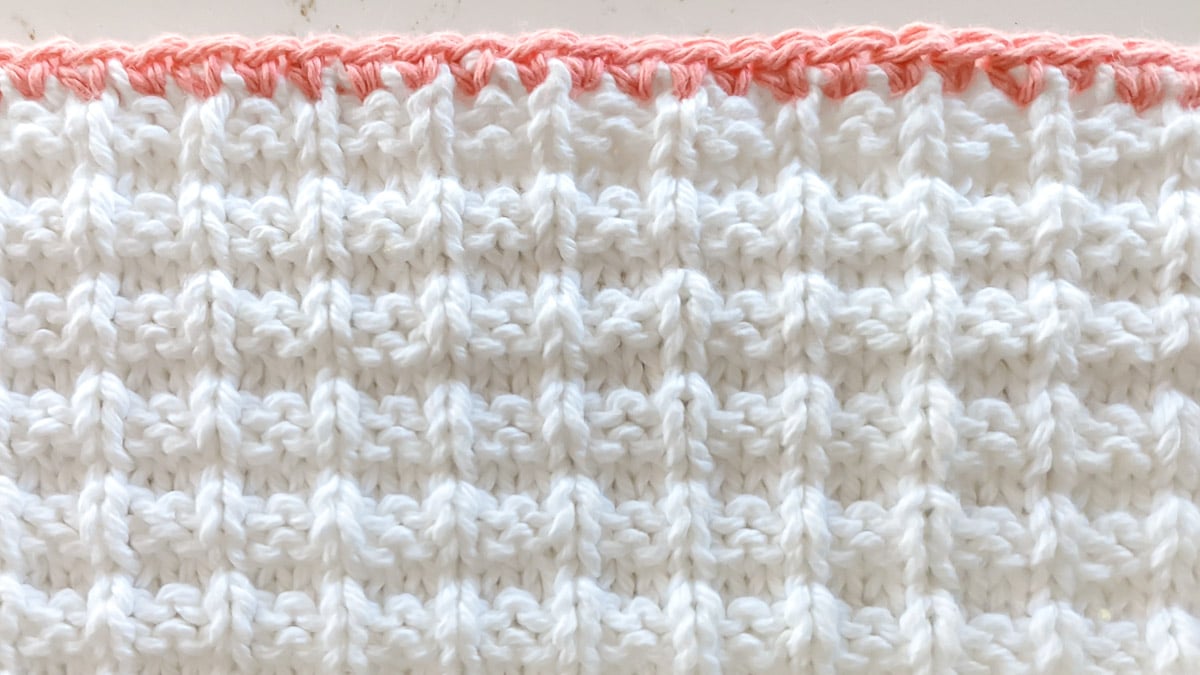Tension in Knitting: Too Loose, Tight, or Inconsistent
Tips to diagnose and prevent issues with tension in knitting. Unfortunately, you can’t go back after and correct tension issues, making it all the more important to prevent them from the get-go!
This is one of 5 posts dedicated to Common Knit Errors and how to fix them.
Knit Errors And How to Prevent And Fix Them
This is one of 5 posts that address certain knit errors; how to diagnose, prevent, and fix them. See the other posts here:
Tension
Knitting tension is how tightly or loosely you pull your stitches when knitting. I am a tight knitter; some are looser knitters.
Beginning knitters often pull the yarn much too tight, making it difficult to knit the next row as it’s difficult to slide the stitches up and down the needle. Additionally, it is also hard to get the point of the needle into a stitch. Knitting too tightly will also affect how the finished project looks: it will not lay flat and will most likely be smaller than you want.
Loose knitters produce a loose and saggy fabric. Like Goldilocks, you don’t want your tension in knitting to be too tight or too loose; but at minimum, you need to keep your tension consistent throughout your work.
Knit Tension: Too Tight
Knitting too tightly is very common in new knitters, but some of us *ahem* older knitters struggle with this as well. 🙋🏼♀️ So, how do you know if you are knitting too tightly?
Diagnosis
- You are having a hard time getting your right hand needle into the stitches on your left hand needle
- The fabric you knit is stiff.
- Your shoulders and hands ache after knitting for a while
- Your gauge swatch has more stitches per inch than the pattern gauge.
Prevention
Well, that’s easy! Don’t knit so tightly! 🤣
But REALLY, how can you loosen up your knitting?
- Make sure you aren’t just knitting at the tip of your needle. Instead, make sure your new stitch is pushed down to the wider part of the needle.
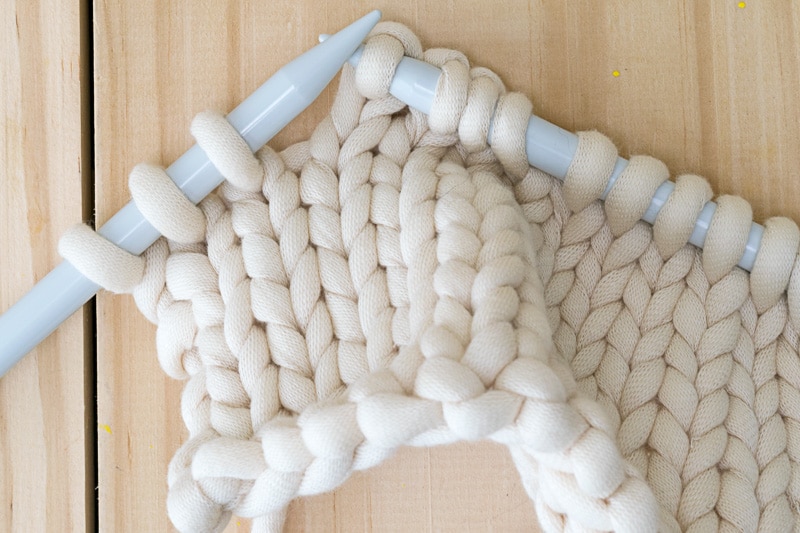
Table of Contents
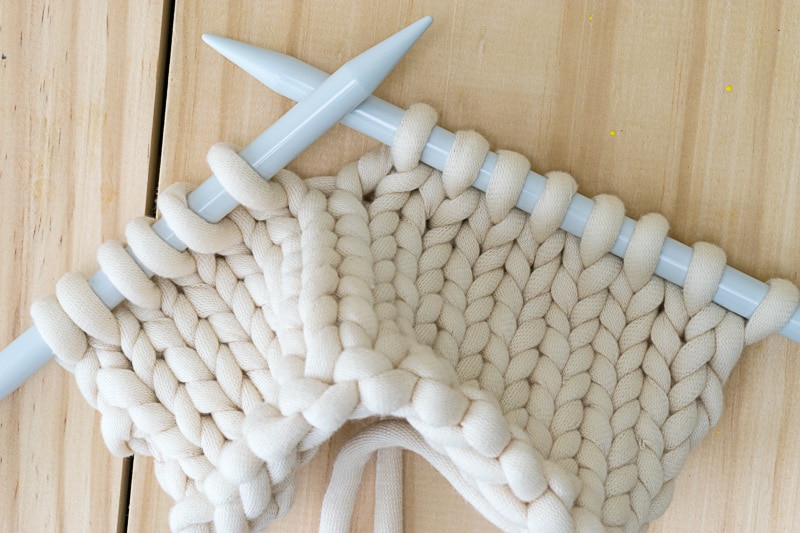
- Relax your hands and shoulders
- Hold the needles and yarn looser
- Keep your needles in more of a horizontal postition
- Try wooden needles
- As a last resort, go up to the next size needle
Knit Tension: Too Loose
On the flip side, how do you know if you are knitting too loosely?
Diagnosis
- Your gauge swatch has fewer stitches per inch than the pattern gauge.
- The fabric you knit is loose.
- Your stitches look ‘droopy’
Prevention
- Don’t force your new stitch too far down on the right hand needle
- Don’t pull the needles apart as your form your new stitches
- Give the working yarn a bit of tension
- Hold your needles at a right angle
Knit Tension: Uneven/Inconsistent
Diagnosis
- Your work from day to day differs in tension.
- You can visibly tell that some stitches are loose and some are tight.
- You might notice that on Stocking Stitch, your purl stitches stand out more than your knit stitches; having a looser tension when purling is not uncommon.
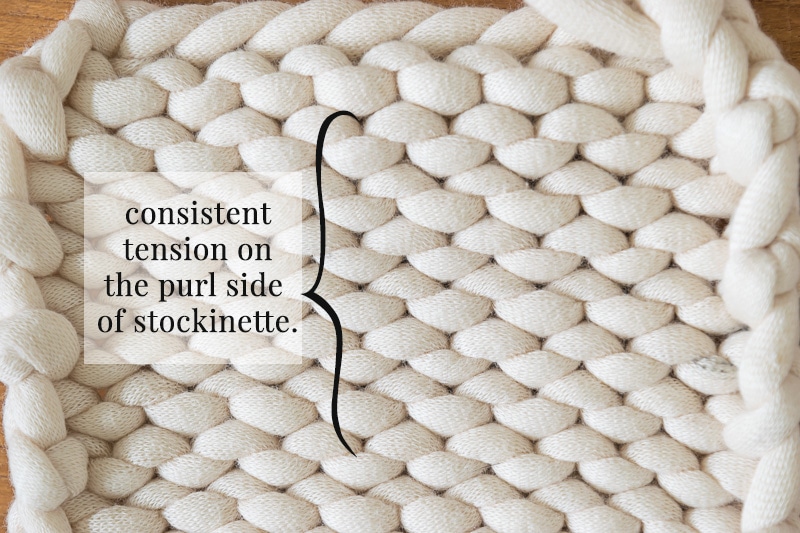

Prevention
- Carve out longer period of times to knit, helping to develop a consistency.
- Practice, practice, practice
- For beginner knitters…the best prevention is to develop good habits right from the get go
- If your purl stitches are looser than your knit stitches, then keep the needles almost parallel to each other when you knit and then move the needles so that it forms a right angle when you purl.
If you want to learn how to knit or are looking to brush up on your knitting skills and knowledge, pop over to the How to Knit page, which houses all of the posts that teach knitting skills. Or, you could go ahead and visit each one by clicking the links below.
All About Knitting
- All About Yarn, including different fibers and weights, how to read a yarn label, and a Yarn Weights Chart
- All About Knitting Needles, including material, sizes, styles, and a Needle Conversion Chart.
- How to Cast On Using the Long-Tail Method, including calculating how much yarn is needed to cast on and how to make a slip knot.
- How to Knit the Knit Stitch
- How to Knit the Purl Stitch
- How to Knit the Seed Stitch
- How to Bind Off, including how to weave in your loose ends.
- How to Read a Knit Pattern, including a Common Knitting Abbreviations Chart.
- This simple Garter Knit Dishcloth will let you put all your new skills to good use!
- How to Block Your Knitting.
- Common Knit Errors; How to Prevent or Diagnose and Fix Them
- Join yarn using the Russian Join
- How to seam pieces of knit fabric with the Mattress Stitch (for sweaters, tops, pillows, etc…)
- How to Knit in the Round with Circular Needles
- How to Knit in the Round with Double-Pointed Needles
- How to Knit in the Round using the Magic Loop Technique.
- Organize Your Knitting with these free printables.
- Check out our Gift Ideas for Knitters.
To refer back to this discussion on Tension in Knitting, bookmark this page or pin the following image.
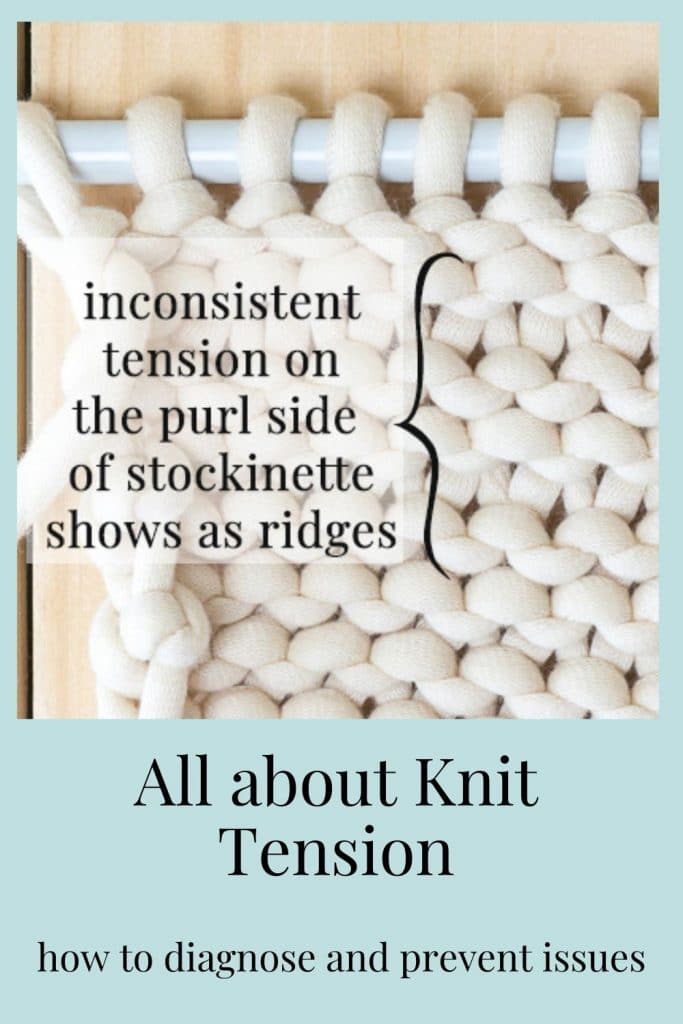
Thanks so much for spending a few minutes of your busy day with me!
To ensure you don’t miss future content, pop your email in the pale green box on the right or click here. I usually send one email weekly, so I won’t inundate your inbox. I’m sensitive to an overflowing email inbox!
We will only use your email address to send you emails, no more than 1-2 weekly. In addition, you will have access to my growing library of knit & crochet patterns and other printables. Check back often as this library will continue to grow. You can unsubscribe anytime by emailing me or clicking on the “unsubscribe” link at the bottom of all emails.
And you can access many of the products I refer to on my Nourish and Nestle Amazon Page. You can access it here.
So, if you’d like to participate in the ‘subscriber benefit’ action, simply subscribe to Nourish and Nestle here or use the form on the right sidebar. It’s slightly towards the top.
I have sent all my subscribers the link to the Subscriber Benefits Library. If you missed it or misplaced it, let me know.
Until next time…



